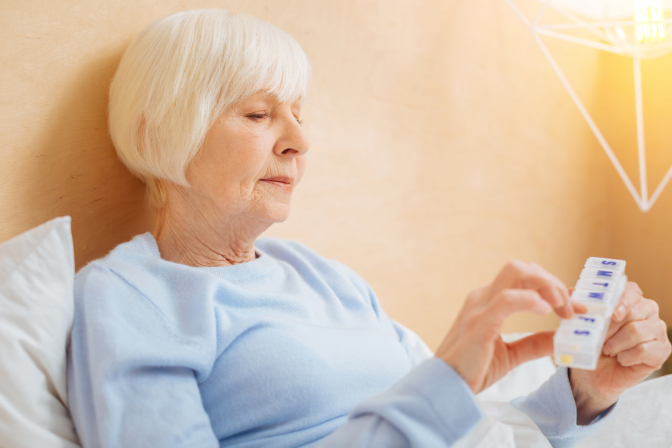Most of the angiotensin receptor blockers (ARBs) control blood pressure for 24 hours with a once-daily dosing.1-9 After oral dosing, ARBs are absorbed rapidly (time for peak plasma levels = 0.5 – 4 hours) with a wide range of bioavailability (13% for eprosartan to 60 – 80% for irbesartan).10
A 2013 systematic comparison of all clinically used ARBs found that most are rapidly absorbed with maximum bioavailability being reached within half an hour to four hours depending on the specific ARB and dose. Elimination half-life ranges from six to 24 hours.11
Normally, blood pressure levels dip in the overnight hours. People whose levels do not dip overnight, when monitored over 24 hours, have been shown to have a higher risk of cardiovascular events.12 The morning rise in blood pressure is known to contribute to the risk of cardiac events in the first few hours after awakening.13
The Hygia Chronotherapy Trial compared clinical results for patients taking their antihypertensive medication upon awakening with those taking their medication at bedtime (n=19.084).14 Ambulatory blood pressure (BP) readings, sleep time BP, and cardiovascular outcomes were all improved in those taking medication at bedtime. A 45% relative reduction in cardiovascular disease (CVD) events was achieved by those consuming their blood pressure medications at bedtime compared to those taking medications upon awakening. The absolute reduction in risk was 5.4%.15
Patients in the Hygia study continued on the medications they were taking at the time of enlistment into the study.14 There was a slightly higher percentage of diuretics and a lower percentage of calcium channel blockers (CCBs) in the morning treatment group. Approximately 69% of participants were taking ARBs or angiotensin-converting enzyme (ACE) inhibitors as monotherapy and 13% were taking CCBs. The most frequently prescribed dual therapy was an ARB or ACE inhibitor with a diuretic (43%) or with a CCB (26%). The authors of the Hygia study point out that there may be medications that do not result in better CVD outcomes when given at bedtime. However, given the high percentage of participants in the Hygia trial taking ARBs or ACE inhibitors, there is good evidence that taking these medications at bedtime may improve outcomes.
References
- Carr AA, Prisant LM. Losartan: First of a new class of angiotensin antagonists for the management of hypertension. J Clin Pharmacol 1996; 36 (1): 3-12.
- Ogihara T, Arakawa K. Clinical efficacy and tolerability of candesartan cilexetil. Candesartan study groups in Japan. J Hum Hypertens 1999; 13 Suppl 1: S27-31; discussion S33-24.
- Gillis JC, Markham A. Irbesartan. A review of its pharmacodynamic and pharmacokinetic properties and therapeutic use in the management of hypertension. Drugs 1997; 54 (6): 885-902.
- Markham A, Goa KL. Valsartan. A review of its pharmacology and therapeutic use in essential hypertension. Drugs 1997; 54 (2): 299-311.
- McClellan KJ, Balfour JA. Eprosartan. Drugs 1998; 55 (5): 713-718; discussion 719-720.
- McClellan KJ, Markham A. Telmisartan. Drugs 1998; 56 (6): 1039-1044; discussion 1045-1036.
- Hedner T, Oparil S, Rasmussen K, et al. A comparison of the angiotensin II antagonists valsartan and losartan in the treatment of essential hypertension. Am J Hypertens 1999; 12 (4 pt 1): 414-417.
- Oparil S, Guthrie R, Lewin AJ, et al. An elective-titration study of the comparative effectiveness of two angiotensin II-receptor blockers, irbesartan and losartan. Irbesartan/losartan study investigators. Clin Ther 1998; 20 (3): 398-409.
- Smith DH. Comparison of angiotensin II type 1 receptor antagonists in the treatment of essential hypertension. Drugs 2008; 68 (9): 1207-1225.
- Israili ZH. Clinical pharmacokinetics of angiotensin II (AT1) receptor blockers in hypertension. J Hum Hypertens 2000; 14 Suppl 1: S73-86.
- Michel MC, Foster C, Brunner HR, Liu L. A systematic comparison of the properties of clinically used angiotensin II type 1 receptor antagonists. Pharmacol Rev 2013; 65 (2): 809-848.
- Mahabala C, Kamath P, Bhaskaran U, Pai ND, Pai AU. Antihypertensive therapy: nocturnal dippers and nondippers. Do we treat them differently? Vasc Health Risk Manag 2013; 9 : 125-133.
- Zhao P, Xu P, Wan C, Wang Z. Evening versus morning dosing regimen drug therapy for hypertension. Cochrane Database Syst Rev 2011; (10): CD004184.
- Hermida RC, Crespo JJ, Domínguez-Sardiña M, et al. Bedtime hypertension treatment improves cardiovascular risk reduction: the Hygia Chronotherapy Trial. Eur Heart J. October 2019. doi:10.1093/eurheartj/ehz754
- NEJM Journal Watch: Summaries of and commentary on original medical and scientific articles from key medical journals. https://www.jwatch.org/na50538/2019/12/26/antihypertension-medications-might-best-be-taken-night. Accessed January 24, 2020.


.png)
